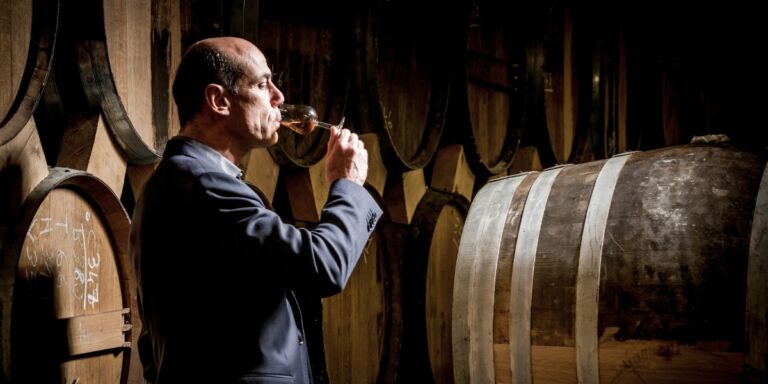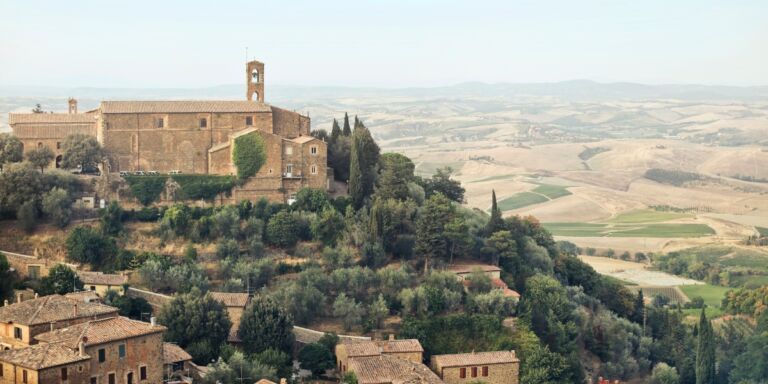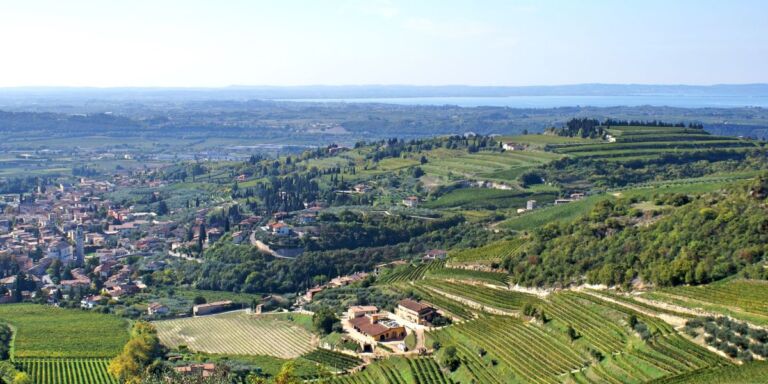Open any wine map of the Loire region, and you’ll see Muscadet to the west and Sancerre to the east, the last 400km of the River Loire dotted with numerous well-known wine regions in between. But the Loire is the longest river in France, over 1,000km in length. Those curious enough can’t help but wonder what happens in those remaining kilometres, as the river winds its way southwards and inland.
The truth is, the source of the river – in the south of Massif Central, the Loire and its tributary Allier River curving through the chains of volcanoes – is home to four wine AOCs that are seldom seen on the wine map of the Loire. Largely unknown to many for decades, they are now coming together as one, under the umbrella of the explosively named ‘Loire Volcanique’, to seek the recognition their wines deserve.

(Photo: Camille Huguenot)
Volcanic soils mark the identity of these four appellations and inspired the name of the association. There’s Saint-Pourcain and Côtes d’Auvergne, both centred around Clermont-Ferrand, and to the east Côte Roannaise and Côtes du Forez, geographically closer to Beaujolais than to Centre-Loire. Gamay is the star here, which accounts for 80 percent of plantings. Some are light and fruity for early drinking, others are serious and complex, with ageing potential. The rest of the vineyard space is shared by Tressallier, Pinot Noir and Chardonnay. Growers within the Volcanique collective seem open to trying a vast array of varieties, permitted either by the IGP or outside their appellation systems. And due to the region’s deep-rooted agricultural traditions, biodiversity is a normal daily affair rather than a recent marketing slogan.

(Photo: Domaine Sérol)
Wines from these areas had a glorious past in the Middle Ages. According to an early 13th century poem called Battle of the Wines, Saint-Pourcain wines were considered the third best in the country (behind those from Beaune and Saint-Émilion). Furthermore, King Louis IX famously served Saint-Pourcain at his brother Alphonse’s 21st birthday banquet. And in its heyday in 1890, Côtes d’Auvergne had 45,000 hectares under vine. However, that has since dwindled to a mere 350 hectares. Phylloxera and industrialisation, topped with a turn to focus on more traditional farming, are among the reasons for the region’s fall in wine production.
‘My grandparents used to sell grapes to the cooperatives around 40 years ago,’ explains Julie Logel of Cave Verdier Logel in Côtes du Forez. ‘For them, the focus was on quantity. Quality was their least concern.’ Luckily, 25 years ago, with new generations taking the helm, things started to transform. In 1994, Côte Roannaise was recognised as an AOC, followed by Côtes du Forez in 2000.

These two regions have always been very close, both literally and figuratively. ‘We all are very small growers and many of us began to work organically, which means on top of growing similar grape varieties, we also share a similar philosophy,’ says Carine Sérol of Domaine Sérol in Côte Roannaise. Attending numerous wine fairs, they met producers from nearby Côtes d’Auvergne and Saint-Pourcain, which became AOCs in 2009 and 2011 respectively. Put together, the four sub-regions cover only 1,315 hectares – when considering Sancerre alone has 3,007 hectares under vine, the idea of working collectively started to make sense. Compared to the rest of the Loire wine region, ‘we are like a drop in the ocean,’ says Logel. ‘We really don’t have time to fight with each other.’
Compared to the rest of the Loire wine region, we are like a drop in the ocean, we really don’t have time to fight with each other
One of the major milestones came in 2014 when the group hosted their first collective tasting, ‘Ici Commence La Loire’ (meaning ‘Here, the Loire begins’). In November 2019, this gave birth to the official ‘Loire Volcanique’ association, and since 2020, Loire Volcanique has organised two wine tastings every year – one locally in the Massif Central, and one in Paris. There are now 42 estates as members across the four appellations. ‘Loire Volcanique definitely helps all of us get more exposure,’ says Mickaël Hyvert of Domaine des Trouillères in Côtes d’Auvergne. ‘For many of our colleagues who have not been exporting in the past, we see opportunities are gradually opening up.’

Ambroise Demonceaux of Clos de Breuilly, a new start-up winery in Saint-Pourcain, agrees with this power in numbers approach. ‘Working together is really important, as it gives us a better chance to be seen on a wine list,’ he says. For a long time, restauranteurs have had to deliberate whether these wines should sit within the Loire, Burgundy or Northern Rhone section? However, when asked if they feel more in step with the Loire or Burgundy in terms of their regional identity, Loren Tisserand of Terres de Roa from Saint-Pourcain replies firmly, ‘We are Auvergne!’

The collective has helped in more ways than just putting these producers on the wine map, though. Stéphanie Guillot of Domaine Fleur de Vigne in Côtes du Forez recalls the 2020 vintage when she was on maternity leave and her pruner was off sick: ‘Many people in the Loire Volcanique came to help prune my vineyard, so I have grapes to harvest in the coming year.’
Looking ahead, Carine Sérol, whose husband Stéphane Sérol is the current president of the Loire Volcanique, thinks it’s crucial to encourage more growers, including cooperatives, to join the Association. ‘My husband and I firmly believe that together, we will grow stronger.’ And together, these four hidden gems of the Loire Volcanique are ready to erupt for the world to see.
Discovering the wines of the Loire Volcanique

(Photo: Domaine Sérol)
Côte Roannaise
The earliest of the Loire Volcanique collective to gain AOC status, Roannaise has just 215 hectares under vine and is making a name for its Gamay Saint-Romain reds and rosés.
Estates to watch: Domaine Sérol; Domaine La Rochette

Côtes du Forez
The smallest appellation (150 ha) with the highest altitude within the Loire Volcanique collective. Equally famous for its reds and rosés made from Gamay Saint-Romain grown on basalt and granite soils.
Estates to watch: Cave Verdier-Logel; Stéphanie Guillot

Saint-Pourçain
The biggest AOC among the four, with 600 hectares under vine. AOC wines must be blended: Pinot Noir with Gamay for reds, Tressallier with Chardonnay for whites. Single-varietal wines under IGP or Vin de France are on trend.
Estates to watch: Domaine des Bérioles; Clos de Breuilly

Côtes d’Auvergne
Located on both sides of Clermont-Ferrand and stretched over 60km. This AOC has 350 hectares of plantings with five well-established crus. Gamay, Pinot Noir, and Chardonnay are permitted under the AOC rules to make white, red and rosés wines.
Estates to watch: Les Chemins de l’Arkose; Domaine des Trouillères








